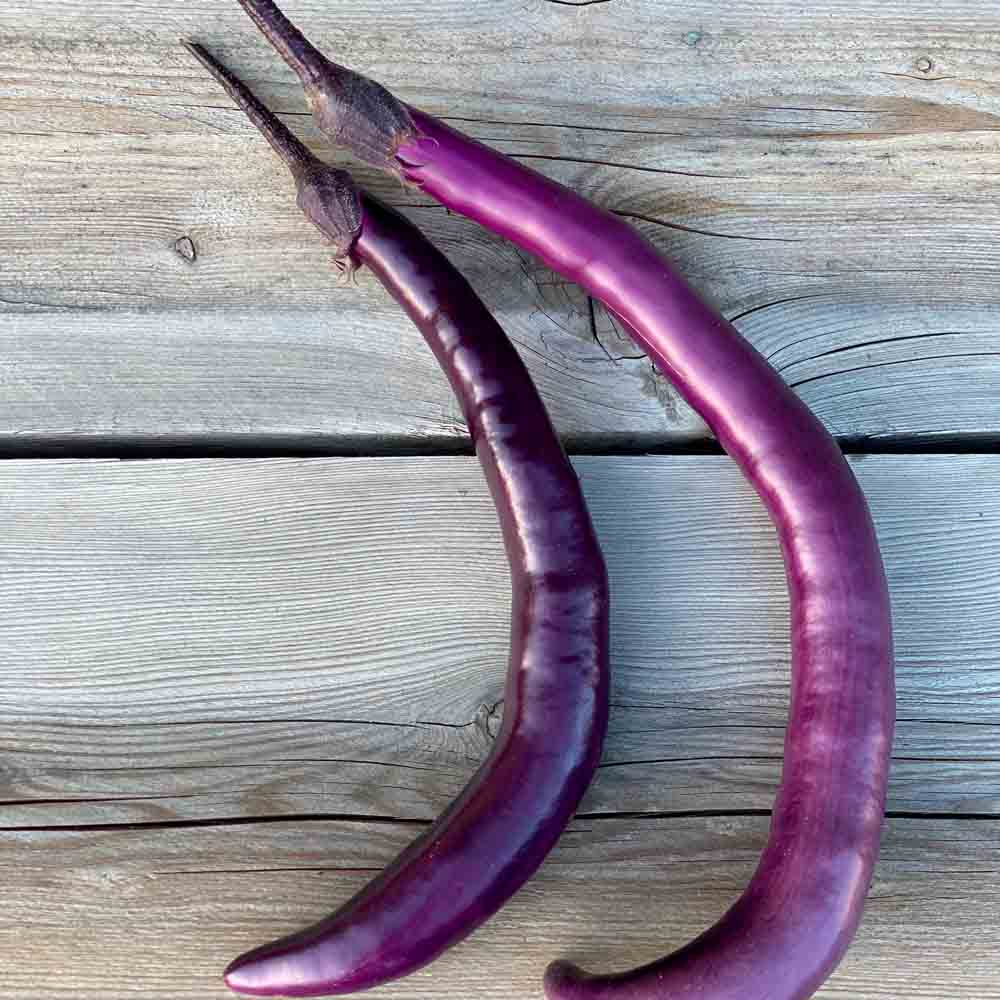JAPANESE EGGPLANT PICKLING AB
Solanum melongena
Very robust and productive , mid-season variety, suitable for growing in greenhouses or in open ground. Produces long, thin, purple fruits, slightly curved, about 20-30 cm long and 2.5 to 5 cm in diameter. Tender flesh and mild flavor . Harvest in 70-75 days after planting.
Use : grilled or baked, its fine size allows you to make beautiful, even round slices to make an eggplant millefeuille or a tian.
How to successfully sow eggplant
Sowing : in a pot of fine seed compost in March/April on a warm bed (25°C constant) indoors or in a heated greenhouse. Cover the seeds with a few mm of seed compost and then press down. Place your pots near a window. Water the surface lightly if the compost dries out.
Planting eggplants
Transplant the young 15 cm plants into the ground at the end of May in fresh, deep, humus-rich soil with a warm, sunny exposure, 50 cm deep in all directions. Hoe, weed, and hill up the eggplant plants. Water regularly at the base and prune like tomatoes. Mulch.
Good associations
You can place an eggplant crop next to bush beans .
Harvesting eggplants
You will be able to harvest your eggplants approximately 3 months after sowing.
The enemies
-
Mildew : will cause gray-green spots to appear on the leaves, while the underside will be covered with a white felt. As a preventative measure, hoeing and watering with nettle manure and horsetail tea. Before the plant flowers, or as soon as the first symptoms appear, it is also possible to treat with Bordeaux mixture .
-
Red spider mites : the leaves first become covered with gray spots before taking on a bronze appearance, then drying out and falling off. They weave webs on the leaves. Cut off the aerial parts and burn them. A treatment by spraying with black soap or nettle manure can then be considered. A plant insecticide ( Anti-Aphids based on Pyrethrum ) can also be used.
-
Colorado beetles : pick them by hand.
-
Aphids : attack leaves, buds, and stems. Spray with a solution of black soap or nettle manure . A biological plant insecticide, such as Pyrethrum -based Anti-Aphids , can be used in the event of a major attack.









